Your cart is currently empty!
Search results for: “70”
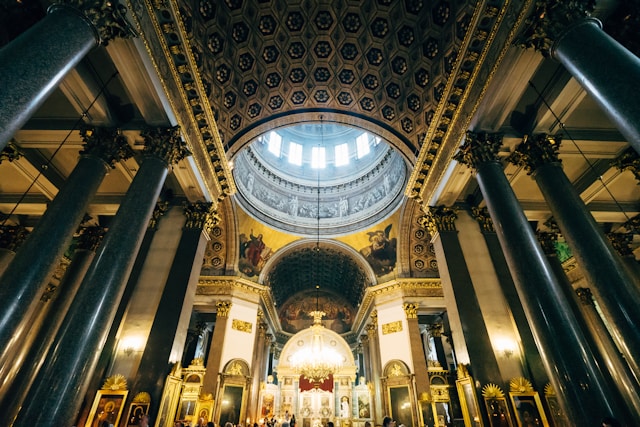
Discover the Kim Burrell Church: A Haven of Praise, Worship, and Empowerment
Introduction
Kim Burrell Church is a thriving Christian community in Houston, Texas, led by the renowned gospel singer and minister, Kim Burrell. Known for its passionate worship, inspiring messages, and community outreach, the church has become a beacon of hope and empowerment for thousands of believers.
A Legacy of Praise and Worship
Kim Burrell’s Anointed Voice
Kim Burrell’s extraordinary vocal abilities have captivated audiences worldwide. Her powerful voice, soaring melodies, and heartfelt lyrics have earned her numerous awards and accolades. Her music has inspired countless souls and brought a deeper connection with God.
Dynamic Worship Experiences
The worship services at Kim Burrell Church are transformative and uplifting experiences. The congregation enthusiastically participates in vibrant singing, fervent prayer, and dynamic preaching. The atmosphere is electric as the Holy Spirit moves and anoints the worshipers.
Biblical Teachings and Empowerment
Sound Doctrinal Foundation
Kim Burrell Church adheres to a strong biblical foundation. Pastor Burrell and her team meticulously study the scriptures and deliver sermons that are both theologically sound and transformative. The congregation is taught practical principles for daily living, personal growth, and spiritual maturity.
Empowering Ministry
Empowerment is a central theme at Kim Burrell Church. Through workshops, mentorship programs, and community initiatives, the church equips its members to fulfill their God-given potential. They are encouraged to discover their spiritual gifts, pursue their passions, and make a positive impact on the world.
Community Outreach and Social Justice
Serving the Needy
Kim Burrell Church actively reaches out to those in need in the community. Through food pantries, clothing drives, and community outreach programs, the church provides tangible support to the less fortunate. They demonstrate the love of Christ by serving those who are hurting.
Social Justice Initiatives
The church also takes a vocal stance on social justice issues. Pastor Burrell and her team speak out against injustice, racism, and inequality. They advocate for peace, unity, and equal rights for all.
Membership and Involvement
Joining the Congregation
Becoming a member of Kim Burrell Church involves a commitment to Jesus Christ, a willingness to serve others, and a desire for spiritual growth. The church provides opportunities for connection and involvement through various ministries, small groups, and volunteer opportunities.
Getting Involved
There are numerous ways to get involved at Kim Burrell Church:
- Join a worship team
- Volunteer in a ministry
- Participate in small groups
- Serve in the community
Location and Contact Information
Kim Burrell Church is located at: 8310 W Tidwell Rd, Houston, TX 77040
Phone: (713) 937-7172
Website: www.kimburrellchurch.orgConclusion
Kim Burrell Church is a vibrant and empowering Christian community that offers a welcoming and nurturing environment for spiritual growth, worship, and service. Through its passionate worship, sound biblical teachings, and community outreach, the church makes a significant impact in the lives of its members and the surrounding community. Whether you are seeking a spiritual home or looking for a place to serve, Kim Burrell Church is a beacon of hope and a transformational force in the lives of believers.
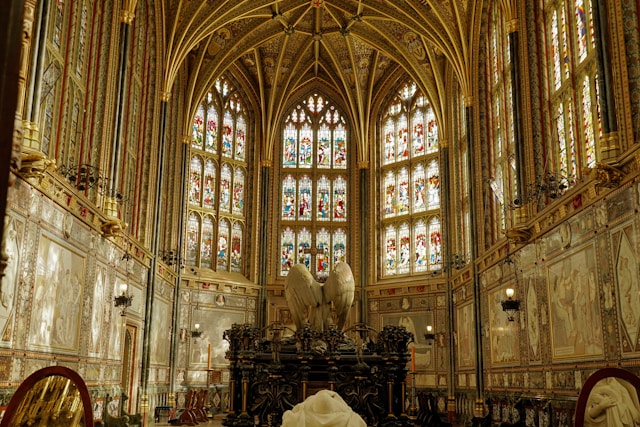
Jubilees: A Guide to Royal Anniversaries and Celebrations
A jubilee is a special anniversary of a monarch’s accession to the throne. It is typically celebrated with a series of events and ceremonies, and often marks a significant milestone in the monarch’s reign.
Types of Jubilees
There are several different types of jubilees, each marking a different number of years on the throne:
- Silver Jubilee: 25 years
- Golden Jubilee: 50 years
- Diamond Jubilee: 60 years
- Sapphire Jubilee: 65 years
- Platinum Jubilee: 70 years
- Blue Sapphire Jubilee: 65 years
- Emerald Jubilee: 80 years
- Centenary Jubilee: 100 years
Royal Jubilees in History
Some of the most famous royal jubilees in history include:
- Queen Victoria’s Golden Jubilee (1887): This was the first major jubilee celebration in British history, and it marked Queen Victoria’s 50 years on the throne. The celebration included a grand procession through London, a banquet at Buckingham Palace, and a series of other events.
- Queen Elizabeth II’s Silver Jubilee (1977): This jubilee celebrated Queen Elizabeth II’s 25 years on the throne. The celebration included a service of thanksgiving at St. Paul’s Cathedral, a banquet at Buckingham Palace, and a series of other events.
- Queen Elizabeth II’s Golden Jubilee (2002): This jubilee celebrated Queen Elizabeth II’s 50 years on the throne. The celebration included a service of thanksgiving at St. Paul’s Cathedral, a banquet at Buckingham Palace, a series of other events, and a special concert at Buckingham Palace.
- Queen Elizabeth II’s Platinum Jubilee (2022): This jubilee celebrated Queen Elizabeth II’s 70 years on the throne. The celebration included a service of thanksgiving at St. Paul’s Cathedral, a banquet at Buckingham Palace, a series of other events, and a special concert at Buckingham Palace.
Jubilee Traditions
There are a number of traditional events and ceremonies that are associated with jubilees. These include:
- Trooping the Colour: This is a military parade that is held on the monarch’s official birthday. It is a traditional part of the jubilee celebrations.
- Service of Thanksgiving: This is a religious service that is held to give thanks for the monarch’s reign. It is typically held at a major cathedral.
- Banquet at Buckingham Palace: This is a grand banquet that is held at Buckingham Palace to celebrate the monarch’s jubilee. It is attended by members of the royal family, politicians, and other dignitaries.
- Special Concerts: Special concerts are often held to celebrate jubilees. These concerts typically feature performances by some of the world’s most famous musicians.
- Fireworks Display: A fireworks display is often held to mark the end of the jubilee celebrations. The fireworks display is typically set off over Buckingham Palace.
Jubilee Souvenirs
A variety of souvenirs are typically produced to commemorate jubilees. These souvenirs can include:
- Commemorative Coins: Special commemorative coins are often minted to mark jubilees. These coins are typically made of gold, silver, or other precious metals.
- Stamps: Special stamps are often issued to mark jubilees. These stamps typically feature the monarch’s portrait or other jubilee-related designs.
- Medals: Special medals are often issued to mark jubilees. These medals are typically awarded to members of the royal family, politicians, and other dignitaries.
- Souvenir Mugs: Souvenir mugs are often produced to mark jubilees. These mugs typically feature the monarch’s portrait or other jubilee-related designs.
- T-shirts: T-shirts are often produced to mark jubilees. These t-shirts typically feature the monarch’s portrait or other jubilee-related designs.
Conclusion
Jubilees are a special way to celebrate the anniversary of a monarch’s accession to the throne. They are typically marked with a series of events and ceremonies, and often feature traditional elements such as Trooping the Colour and a service of thanksgiving. Jubilees are also a time to reflect on the monarch’s reign and to celebrate their achievements.

Explore the Institute of Christ the King: Nurturing Catholic Faith through Traditional Liturgy
Introduction
The Institute of Christ the King Sovereign Priest (ICRSP) is a flourishing Catholic society that ardently cherishes the Traditional Latin Mass and upholds unwavering adherence to the pre-Vatican II Catholic liturgy. Founded in 1990 by a group of devout priests, the ICRSP has since expanded globally, establishing communities and apostolates in various nations.
Origins and History
The Institute’s genesis can be traced back to the 1970s when a fervent desire for the restoration of the Traditional Latin Mass began to take root within the Catholic community. In 1990, this aspiration materialized with the establishment of the Institute of Christ the King, led by Monsignor Gilles Wach. The ICRSP received its canonical recognition from the Vatican in 2006.
Mission and Charism
The mission of the Institute of Christ the King revolves around the revitalization and propagation of the Traditional Latin Mass and the rich Catholic liturgical tradition associated with it. The ICRSP firmly believes that the Extraordinary Form of the Roman Rite, with its timeless beauty and profound reverence, fosters a deeper connection with God and strengthens the bonds of Catholic identity.
Liturgical Practices
At the heart of the ICRSP’s charism lies the celebration of the Traditional Latin Mass, also known as the Tridentine Mass. This ancient form of the Mass, codified by Pope St. Pius V in 1570, has been cherished by generations of Catholics for its solemnity, reverence, and adherence to Sacred Tradition.
The ICRSP priests don elaborate vestments and meticulously follow the intricate rituals of the Tridentine Mass. The Latin language, the traditional language of the Church, is exclusively employed, contributing to the sense of continuity and connection with the Church’s rich history.
Formation and Apostolates
The ICRSP places great emphasis on the formation of its priests and seminarians. Seminarians undergo a rigorous program of studies that encompasses theology, philosophy, sacred liturgy, and pastoral ministry. This comprehensive formation equips them to lead the ICRSP’s various apostolates.
The Institute’s apostolates include the celebration of the Traditional Latin Mass in parish churches, the establishment of chaplaincies for traditional Catholic communities, the formation of altar servers and lay ministers, and the publication of liturgical resources. Through these initiatives, the ICRSP actively promotes the Traditional Latin Mass and fosters Catholic renewal.
Global Presence
The Institute of Christ the King has established a significant global presence, with communities and apostolates in over 30 countries across five continents. In the United States, the ICRSP has a strong presence in cities such as New York City, Chicago, and San Francisco. In Europe, ICRSP communities can be found in France, Italy, Spain, and the United Kingdom.
Impact and Recognition
The Institute of Christ the King has played a pivotal role in the revival of the Traditional Latin Mass and the preservation of Catholic liturgical heritage. The Institute’s unwavering commitment to tradition has garnered both admiration and support from many Catholics worldwide.
The ICRSP has received recognition and approval from prominent Church authorities, including Pope Benedict XVI and Pope Francis. The Institute’s work has been featured in numerous Catholic publications and media outlets, further amplifying its influence and impact.
Conclusion
The Institute of Christ the King Sovereign Priest stands as a beacon of unwavering Catholic tradition in the contemporary world. Through its unwavering dedication to the Traditional Latin Mass and its commitment to liturgical excellence, the ICRSP nourishes the faith of countless Catholics and contributes to the vitality and renewal of the Catholic Church. As the Institute continues its mission, it remains a source of inspiration and guidance for those who seek to deepen their connection with the Church’s rich liturgical and spiritual heritage.
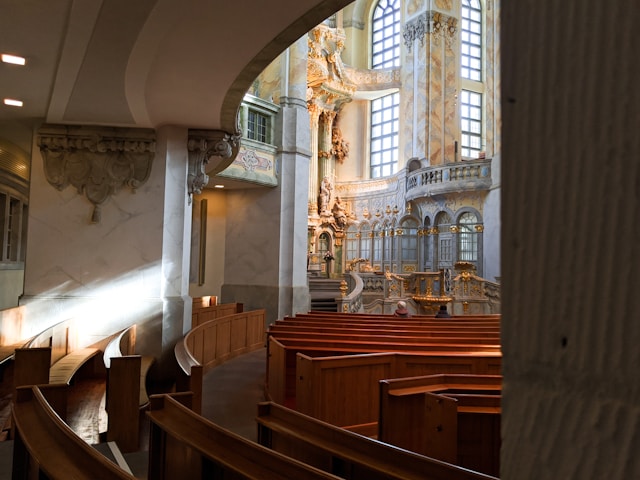
Unveiling the Rich History and Impact of Hickory Grove Baptist Church
A Legacy Steeped in Faith and Community
Hickory Grove Baptist Church stands as a beacon of spirituality, service, and community in the heart of Charlotte, North Carolina. Its roots stretch back to the humble beginnings of a small congregation in 1856, and over the centuries, it has grown into a thriving and influential spiritual center.
Humble Origins: The Founding Years
The church’s story begins with a group of African American believers who gathered in a small log cabin on the outskirts of Charlotte. Led by Reverend John Frazier, they shared their faith and established a close-knit community. As the congregation grew, they constructed a wooden church building in 1872, becoming known as the Hickory Grove Baptist Church.
Flourishing Under Strong Leadership
Reverend Dr. Walter Johnson: A Guiding Light
In 1918, Reverend Dr. Walter Johnson became pastor of Hickory Grove Baptist Church. His dynamic leadership and unwavering commitment to social justice paved the way for the church’s expansion and influence. Under his guidance, the congregation renovated the church building, established outreach programs, and became a powerful voice for the African American community.
Expanding Ministries and Community Impact
- Education: The church founded the Hickory Grove Christian School in 1957, providing quality education for children and youth.
- Community Service: Hickory Grove Baptist Church has been a hub for various social services, including a soup kitchen, food pantry, and after-school programs.
- Mission Work: The church has a long-standing commitment to missions, supporting ministries both locally and internationally.
A Center of Worship and Spiritual Growth
Worship Services: A Heartfelt Connection
Hickory Grove Baptist Church offers a diverse range of worship services to meet the spiritual needs of its congregation. From traditional hymn singing to contemporary music, there is a service for every soul. The church’s experienced worship team leads the congregation in lifting their voices in praise and adoration.
Spiritual Growth and Discipleship
- Bible Study: The church’s Bible study groups provide an opportunity for deeper study and understanding of Scripture.
- Prayer Groups: Members come together to pray for each other, their community, and the world.
- Discipleship Programs: Hickory Grove Baptist Church offers various programs to help members grow in their faith and spiritual maturity.
Community Outreach and Social Justice
Hickory Grove Baptist Church has always been deeply involved in community outreach and social justice initiatives.
Addressing Community Needs
The church’s community programs aim to address the needs of the surrounding neighborhood. From food assistance to affordable housing initiatives, Hickory Grove Baptist Church seeks to make a tangible difference in people’s lives.
Advocacy for Justice
Hickory Grove Baptist Church has a strong history of advocacy for social justice and equality. The church has been involved in the civil rights movement and continues to speak out against injustice and discrimination.
A Thriving Present and a Promising Future
Continued Leadership and Innovation
Under the guidance of current pastor Reverend Dr. Dwayne A. Bond, Hickory Grove Baptist Church continues to flourish. The church is embracing technological advancements and creative outreach initiatives to reach a wider audience.
Preparing for the Future
Hickory Grove Baptist Church is actively planning for the future. The congregation is engaged in strategic planning to ensure that the church remains a vibrant and impactful spiritual center for generations to come.
Contact Information
www.hickorygrovebaptistchurch.com
1012 Seigle Avenue, Charlotte, NC 28206
Phone: (704) 372-1820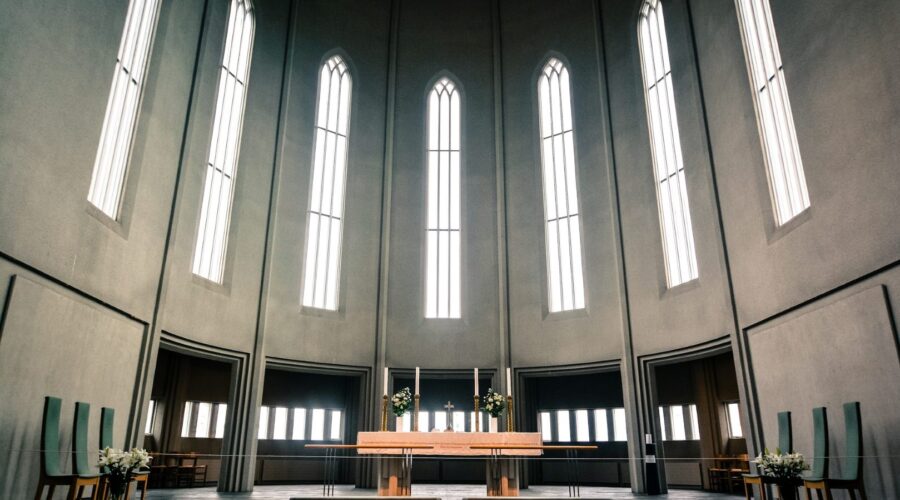
Henri de Lubac: A Luminary of Catholic Theology
Early Life and Education
Henri de Lubac, born Henri Marie Joseph Sortais in 1896, was a renowned French Catholic cardinal and theologian. Growing up in a devout Catholic family, he developed a deep passion for theological studies from a young age.
After completing his secondary education, de Lubac joined the Society of Jesus in 1913. He pursued his theological studies at the Pontifical Biblical Institute in Rome and was ordained a priest in 1927.
Career and Theological Contributions
Exegesis and Scripture
De Lubac’s initial focus was on exegesis and biblical studies. He argued for a holistic approach to scriptural interpretation, emphasizing the role of tradition and the need for a deep understanding of the spiritual and historical contexts of biblical texts.
The Supernatural
De Lubac’s most significant contribution to theology lies in his exploration of the concept of the supernatural. In his magnum opus, Surnaturel (1946), he challenged the prevailing idea that the supernatural is something entirely separate from the natural. Instead, he posited that they are intimately intertwined, with grace elevating nature and leading it to its ultimate fulfillment.
The Church and the World
De Lubac also delved into ecclesiology, examining the relationship between the Church and the world. He viewed the Church not as an isolated institution but as a vital part of human society, called to engage with the world and transform it through the Gospel message.
Ecumenism and Interfaith Dialogue
As an advocate for ecumenism, de Lubac sought to foster unity among Christian denominations. He also promoted interfaith dialogue, recognizing the value of learning from other religions and seeking common ground.
Influence and Recognition
Theological Revival
De Lubac’s writings had a profound influence on 20th-century theology. They helped spark a revival of interest in dogmatic theology and inspired a generation of scholars and theologians.
Cardinal and Theologian
In 1983, de Lubac was appointed a cardinal by Pope John Paul II in recognition of his outstanding contributions to Catholic theology. He became a renowned figure within the Church and continued to write, teach, and engage in theological dialogue.
Key Insights from De Lubac’s Theology
Importance of Tradition
De Lubac emphasized the centrality of tradition in understanding the Christian faith. He argued that the Church’s teachings and practices are not arbitrary but rooted in the apostolic tradition.
Dialogue and Inclusivity
De Lubac believed that dialogue was essential for fostering unity and understanding. He encouraged Catholics to engage with other Christians and people of different faiths.
Christ-Centeredness
At the heart of de Lubac’s theology lay a profound Christ-centeredness. He saw Christ as the fulfillment of all human hopes and the key to understanding the meaning of life.
Legacy and Impact
Henri de Lubac left an enduring legacy in Catholic theology. His writings continue to be studied and inspire theologians and believers alike. His emphasis on tradition, dialogue, and the centrality of Christ has shaped the course of contemporary Catholic thought.
Further Reading
Books by Henri de Lubac
Books on Henri de Lubac
- Henri de Lubac: A Biography by Michael J. Marthaler
- Henri de Lubac: Theologian of the Twentieth Century by Jean-Yves Lacoste
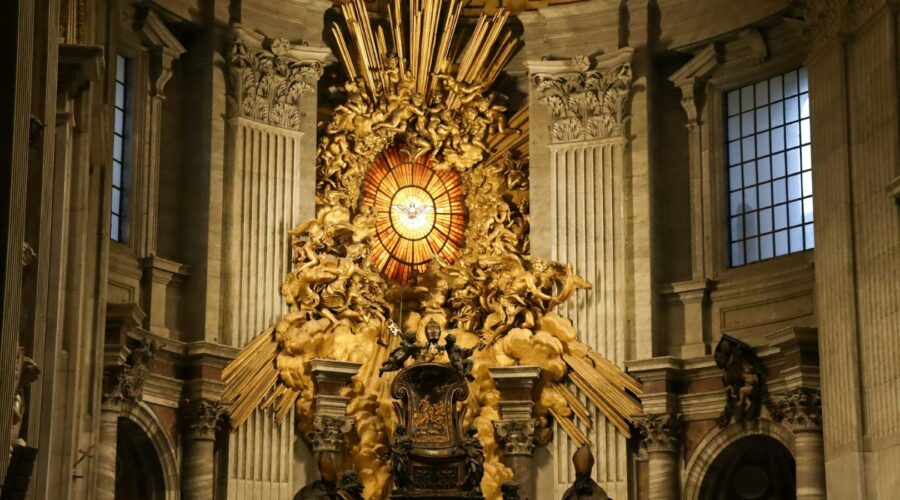
Ed Stetzer: Renowned Researcher, Author, Church Leader, and Thought Leader
Introduction
Dr. Ed Stetzer, a respected name in the Christian community, is a prominent researcher, author, church leader, and thought leader. Throughout his career, he has consistently offered insightful perspectives on contemporary trends and issues shaping Christianity. This comprehensive guide explores Ed Stetzer’s life, work, and key contributions to the field.
Early Life and Education
Ed Stetzer was born on February 26, 1970, in Pittsburgh, Pennsylvania. His father, an ordained minister, fostered a strong Christian upbringing that would later influence his life’s path. Stetzer pursued his undergraduate studies at Liberty University, where he earned a Bachelor of Science in Religion in 1992. He then went on to complete a Master of Divinity degree from Southeastern Baptist Theological Seminary in 1995 and a Doctor of Philosophy in Church Growth and Evangelism from Southern Baptist Theological Seminary in 2000.
Pastoral Ministry and Research
Stetzer began his pastoral ministry at a small church in Virginia while still pursuing his doctoral studies. In 2000, he joined the staff of Willow Creek Community Church in South Barrington, Illinois, where he served as the director of missions and church planting. During his tenure, Stetzer developed innovative strategies for outreach and discipleship, and his research on church trends gained recognition within the evangelical community.
Founding the Billy Graham Center
In 2006, Stetzer co-founded the Billy Graham Center for Evangelism at Wheaton College with evangelist Luis Palau. As the first director of the center, Stetzer led research initiatives on evangelism and discipleship, producing influential studies that shaped the understanding and practice of these areas in churches worldwide. The Billy Graham Center has become a leading voice in equipping Christian leaders and churches for effective outreach.
Thought Leadership and Publications
Stetzer is a prolific author and speaker, having published numerous books and articles on church growth, evangelism, and leadership. Some of his most notable works include:
– “Planting Missional Churches: Your Guide to Starting and Sustaining Healthy Churches” (2013)
– “The Adolescent Experience: What Teenagers Need from Adults” (2010)
– “Transforming Church: Strategies for Empowering Your Congregation and Reaching Your Community” (2009)Key Contributions to the Field
Ed Stetzer has made significant contributions to the study and practice of Christianity, particularly in the areas of:
– **Church Planting and Growth:** Stetzer’s research has provided valuable insights into the dynamics of church growth and planting, helping churches develop effective strategies for reaching their communities.
– **Evangelism and Discipleship:** His emphasis on evangelism as a core part of the Christian mission has encouraged churches to prioritize outreach and disciple-making.
– **Leadership Development:** Stetzer’s writings and workshops have equipped Christian leaders with practical tools and biblical principles for effective leadership in ministry.
– **Cultural Trends:** Stetzer’s keen observation and analysis of cultural trends have helped churches understand the changing landscape and adapt their ministries accordingly.Current Role and Impact
Currently, Dr. Stetzer serves as the executive director of the Billy Graham Center for Evangelism and an adjunct professor at Wheaton College. He is also the creator and host of “The Exchange,” a podcast that explores contemporary issues facing Christianity. Through his research, writing, and leadership, Stetzer continues to influence the direction and practices of the Christian church worldwide.
Conclusion
Ed Stetzer is a renowned thought leader, researcher, author, and church leader who has dedicated his life to equipping and empowering the Christian community. His contributions have impacted the fields of church growth, evangelism, leadership development, and cultural understanding. As a voice of wisdom and guidance, Dr. Stetzer continues to shape the future of Christianity by providing practical insights and innovative strategies that help churches thrive and reach their mission effectively.
Additional Information
For further exploration, consider:
– Ed Stetzer’s website: https://edstetzer.com/
– Billy Graham Center for Evangelism: https://www.wheaton.edu/academics/billy-graham-center-for-evangelism-billy-graham-center/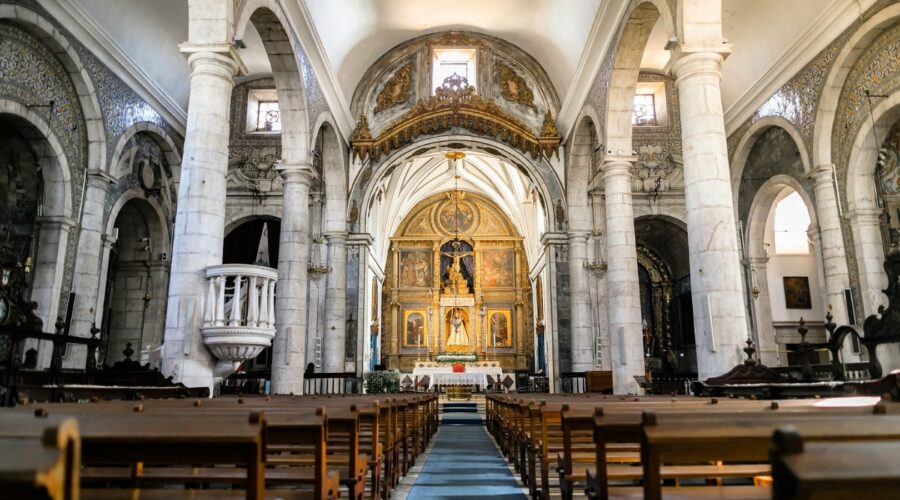
Dixon Church: A Comprehensive Guide to Its History, Significance, and Services
Introduction
Dixon Church, nestled amidst the charming town of Dixon, California, stands as a testament to the rich religious heritage and vibrant community spirit of the region. This historic church has served as a spiritual haven for generations, offering solace, inspiration, and a sense of belonging to its congregation.
Historical Significance
The origins of Dixon Church can be traced back to the mid-19th century, when a group of devout settlers from across the country gathered to establish a place of worship. In 1863, the first church building was erected on Second Street, serving as a humble gathering place for the growing Methodist congregation.
Over the years, the church underwent several expansions and renovations. In 1908, a new brick building was constructed at the corner of First and G Streets, which remains the church’s current location. The original 1863 building was moved to a nearby site and converted into a community center known as the “Old Church”.
Architectural Features
Dixon Church is a striking example of Victorian architecture, with its distinctive Gothic Revival elements. The exterior boasts pointed arched windows, intricate brickwork, and a towering steeple that rises prominently above the surrounding buildings.
Inside, the church sanctuary features a high-vaulted ceiling with exposed wooden beams. The stained-glass windows, depicting biblical scenes, flood the space with vibrant colors and create an awe-inspiring atmosphere.
Congregation and Services
Dixon Church is home to a diverse and welcoming congregation, representing a wide range of ages and backgrounds. The church offers a variety of traditional and contemporary worship services:
Traditional Services
- Sunday Morning Worship: 8:00 AM (traditional) and 10:00 AM (contemporary)
- Wednesday Evening Prayer: 7:00 PM
Contemporary Services
- Saturday Evening Praise and Worship: 6:00 PM
- Sunday Evening Youth Service: 6:00 PM
Community Outreach
Beyond its religious services, Dixon Church actively engages in community outreach programs, reaching out to the underserved and promoting a spirit of compassion and service:
Food Pantry
The church operates a food pantry that provides groceries to individuals and families in need. The pantry is open on Mondays and Wednesdays from 9:00 AM to 12:00 PM.
After-School Program
Dixon Church offers an after-school program for children ages 6-12. The program provides a safe and nurturing environment for homework help, tutoring, and recreational activities.
Community Events
Throughout the year, the church hosts various community events, such as potlucks, concerts, and craft fairs. These events serve to foster a sense of unity and camaraderie within the Dixon community.
Visitor Information
Visitors are warmly welcomed at Dixon Church. The following information may be helpful:
Location:
110 N First St, Dixon, CA 95620
Contact:
- Church Office: (707) 678-2940
- Email: [email protected]
Website:
Accessibility:
The church is wheelchair accessible and provides reserved parking spaces for individuals with disabilities.
Conclusion
Dixon Church is more than just a religious institution; it is a beacon of faith, a symbol of community, and a source of inspiration for generations. Its rich history, architectural beauty, and unwavering commitment to serving the community make it a true landmark and a cherished part of the Dixon landscape.
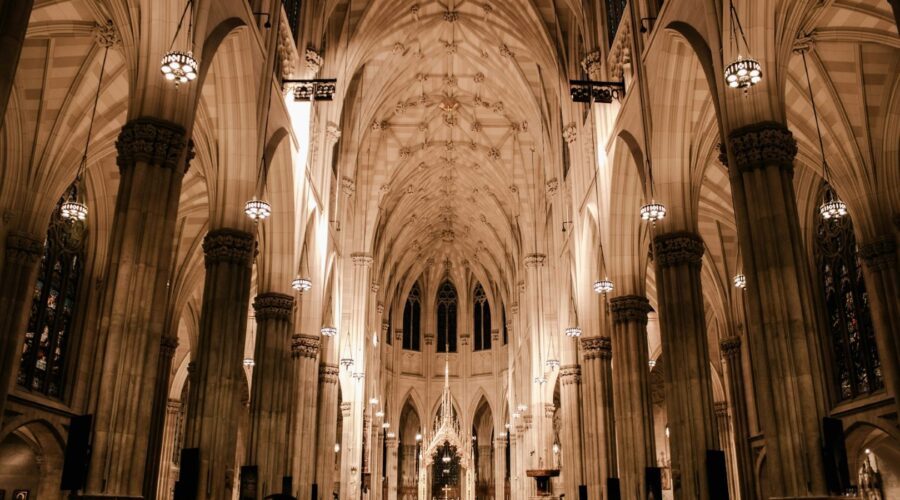
David Yonggi Cho: A Lighthouse of Faith and Charisma
Early Life and Spiritual Awakening
David Yonggi Cho (1936-2021) was born in Ulsan, South Korea. His childhood was marked by poverty and the Korean War. At the age of 17, he had a profound spiritual experience that led him to convert to Christianity.
Cho’s initial church was a small gathering in a tent. However, through his unwavering belief and charismatic preaching, his congregation grew exponentially. In the early 1960s, he founded the Yoido Full Gospel Church in Seoul, which became the largest Pentecostal church in the world.
Theological Beliefs and Practices
Cho’s theological views were rooted in the Pentecostal tradition, emphasizing the baptism of the Holy Spirit, divine healing, and the power of prayer. He believed in the importance of faith-based prosperity and saw the church as a vehicle for social transformation.
One of Cho’s key teachings was the “four spiritual laws of love.” He believed that these laws were essential for a fulfilling Christian life:
- God loves you and wants a personal relationship with you.
- Sin separates you from God.
- Jesus Christ died on the cross to pay for your sins.
- You can receive forgiveness and eternal life by believing in Jesus Christ.
Church Growth and Expansion
Under Cho’s leadership, Yoido Full Gospel Church experienced phenomenal growth. By the 1970s, it had become a mega-church with millions of members. Cho attributed this growth to prayer, evangelism, and a strong emphasis on discipleship.
Cho played a significant role in spreading Pentecostalism and Christianity throughout South Korea and beyond. He established churches and trained thousands of pastors worldwide.
Controversies and Criticism
Despite his widespread influence, Cho’s ministry was not without controversy. Critics accused him of financial improprieties and of using his platform to promote his personal agendas.
In the 1990s, Cho was imprisoned for embezzling church funds. He later claimed to have been falsely accused and that the charges were politically motivated.
Legacy and Impact
Despite the controversies, David Yonggi Cho’s legacy remains significant. He is remembered as a tireless advocate for faith-based healing, prosperity, and spiritual growth.
Cho’s teachings and the work of the Yoido Full Gospel Church continue to inspire Christians around the world. His focus on practical Christianity and his belief in the power of prayer have left an enduring mark on the Pentecostal movement.
Key Takeaways
- David Yonggi Cho was a charismatic leader who led the growth of the Pentecostal movement in South Korea and beyond.
- He emphasized the importance of faith-based prosperity and the power of prayer.
- The “four spiritual laws of love” were a cornerstone of his teachings.
- Yoido Full Gospel Church, founded by Cho, became the largest Pentecostal church in the world.
- Despite controversies, Cho’s legacy remains significant as an advocate for faith-based healing and spiritual growth.

CSI Church: A Comprehensive Insight into Its History, Beliefs, and Practices
Introduction
The Church of South India (CSI) is a united Protestant Church in India, formed in 1947 through the union of four major Protestant denominations in South India: the Anglican Church of South India, the Methodist Church in Southern Asia, the Congregational Church in South India, and the Presbyterian Church of South India.
The CSI is the largest Protestant denomination in India, with over 4 million members in 25 dioceses spread across 14 states in South India. The Church is a member of the World Council of Churches, the Christian Conference of Asia, and the National Council of Churches in India.
History of CSI Church
The roots of the CSI Church can be traced back to the work of Christian missionaries in South India during the 18th and 19th centuries. The first Anglican missionaries arrived in India in 1706, followed by Methodist missionaries in 1817 and Congregational missionaries in 1836. Presbyterian missionaries began working in South India in 1841.
These missionary efforts led to the establishment of several Protestant denominations in South India. The Anglican Church of South India was formed in 1896, the Methodist Church in Southern Asia in 1905, the Congregational Church in South India in 1914, and the Presbyterian Church of South India in 1924.
In the early 20th century, there was a growing movement towards unity among the Protestant churches in South India. In 1947, the four major Protestant denominations in South India merged to form the Church of South India.
Beliefs of CSI Church
The CSI Church is a Trinitarian church that affirms the Nicene Creed as its statement of faith. The Church believes in the Bible as the inspired word of God and in the sacraments of baptism and Holy Communion.
The CSI Church is also a member of the World Methodist Council, which affirms the following core beliefs:
- The unity of God as Father, Son, and Holy Spirit
- The full deity and full humanity of Jesus Christ
- The saving power of the Holy Spirit
- The authority of the Bible as the word of God
- The importance of Christian mission
Practices of CSI Church
The CSI Church is a liturgical church that follows the Book of Common Prayer. The Church’s worship services are characterized by their use of music, hymns, and Scripture readings.
The CSI Church also has a strong emphasis on social justice. The Church works to promote education, healthcare, and economic development in the communities it serves.
Structure of CSI Church
The CSI Church is governed by a synod, which is composed of bishops, clergy, and laity. The synod meets annually to elect the Church’s bishops and to set policy.
The CSI Church is divided into 25 dioceses, each of which is led by a bishop. The dioceses are further divided into districts, which are led by district superintendents.
Challenges Facing CSI Church
The CSI Church faces a number of challenges, including:
- The rise of Pentecostalism and evangelicalism in India
- The continuing influence of caste and other social divisions within the Church
- The need to address the social and economic needs of its members
Future of CSI Church
Despite the challenges it faces, the CSI Church remains a vibrant and growing church. The Church is committed to its mission of proclaiming the gospel of Jesus Christ and serving the people of South India.
The future of the CSI Church is bright. The Church is well-positioned to continue to grow and to make a significant impact on the lives of its members and the communities it serves.
Conclusion
The CSI Church is a vibrant and growing church with a rich history and a bright future. The Church is committed to its mission of proclaiming the gospel of Jesus Christ and serving the people of South India.